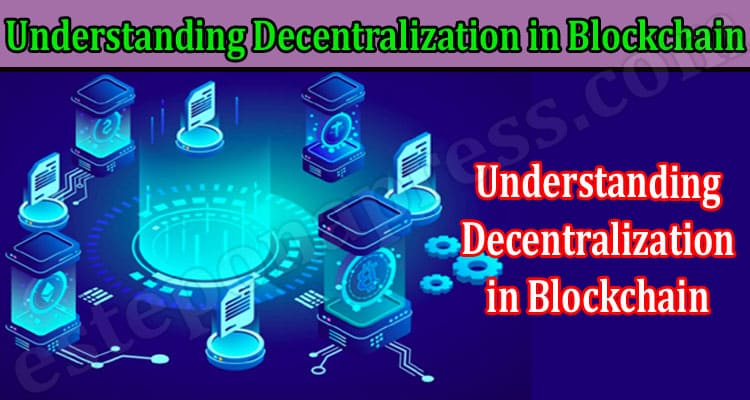We hope your expectation for information about Understanding Decentralization in Blockchain is fulfilled, compiled in the article.
Decentralization in Blockchain guarantees that control and decision-making are not concentrated in the hands of a single individual or group but are distributed evenly over a network to eliminate the possibility of bias or misjudgment.
This network is connected by several ‘nodes,’ which check the validity of new blocks before adding them to the chain. It improves the security of Blockchain for users. To tamper with the Blockchain, a person would have to fiddle with the chain’s blocks and hack every node, which is nearly impossible. Get a grip on it for more details and understand the Understanding Decentralisation in Blockchain.
What is Blockchain Decentralization?
Movement of governance and the process of making decisions from one central authority to a dispersed range of connections through a network are called Blockchain Decentralization. These connections have a purpose to limit the faith that members must place so as to prevent them from exerting authority or control over others that can harm the network’s performance.
Understanding Decentralization in Blockchain
Advances in the digital world are gradually shaping people’s daily lives, businesses, academic institutions, corporations, and governmental entities. However, the hypothetical administrative systems used in this regard have not evolved at the same rate. One of the finest technologies for resolving this is the decentralized implementation of blockchain technology. It’s widely regarded as a platform that can provide answers to various pressing issues, including digital identification, asset and data ownership, security, and, perhaps most shockingly, future decentralized decision-making.
Benefits of Decentralization in Blockchain
- Allows for a faithful surrounding to be created.
Faithfulness among members is crucial in such systems. This is because every network member has a replica of the information contained in a distributed record. In any case, if a member’s record is altered or polluted, the majority of others in the network will disregard it. This advantage is essential in Understanding Decentralization in Blockchain.
- Data recovery is improved.
Corporations share information with their partners regularly. As a result, this information is updated periodically and stored in each party’s information vaults, where it may resurface when it is needed to be transferred downstream. When information is updated, it creates opportunities for data loss or incorrect information to reach the workplace. Thanks to a decentralized information repository, each partner has a timely and distributed impression of the facts. This is a very crucial point in Understanding Decentralization in Blockchain.
- Dispersion of assets has been optimized.
Decentralization can also help streamline asset dispersion so that promised services are delivered with greater execution and consistency and a lower risk of a catastrophic letdown.
Conclusion
Blockchain decentralization is an information foundation that keeps a collection of resources and exchanges through a peer-to-peer network. It’s possible that the “resource” isn’t just cash or transaction history but also ownership, contracts, products, and other information. Unlike previous peer-to-peer networks, a blockchain does not replicate the transmitted value. However, taking everything into account, credit has been transferred from one participant to the next.
It is all you have to know about Understanding Decentralization in Blockchain.
Do you have any other benefits of Decentralization in Blockchain? Please share it in the comment section below.

